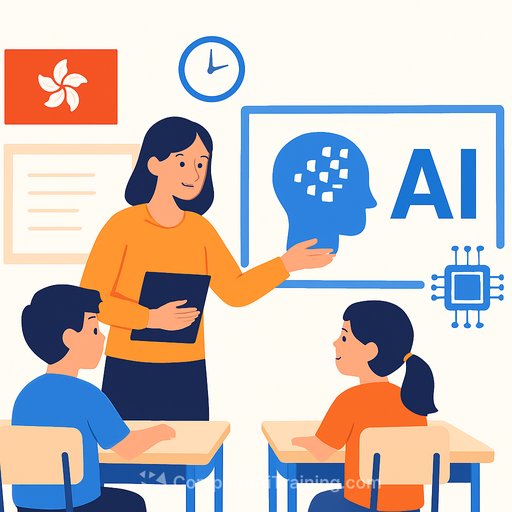AI in Hong Kong Schools: Connection Before Solution
Hong Kong's digital education blueprint sets the right direction: build AI competencies, develop teachers and expand school resources. But the plan only works if human connection sits at the center. Learning is relational. If students don't feel safe, seen and included, the best tools won't move the needle.
Think "Maslow before Bloom." When emotional needs are met, higher-order thinking shows up. Student agency grows in classrooms where learners can name feelings, express needs and lean on supportive peers. Technology can amplify this, but it can't replace it.
Why human connection multiplies learning
Agency isn't installed by software. It's built through trust. We've all felt the difference between one-way presentations and sessions that get people moving, listening and speaking with clarity. The second approach creates psychological safety - and that's when complex ideas click, including how to use AI responsibly.
In short: connection before solution. Establish the human layer, then layer in the digital.
What this looks like in practice
- Start every lesson with a 2-3 minute check-in: a feelings prompt or quick red/yellow/green indicator.
- Use structures that reduce passive time: think-pair-share, stand-up interviews, small-group protocols.
- Co-create class norms focused on respect, listening and repair after conflict.
- Teach simple needs-language: "What do you need to learn right now-clarity, time, examples, quiet?"
- Blend AI with humanity: let tools handle routine tasks so teachers can read the room and coach.
A quick-start kit for teachers
- Daily warm starts: mood meters, one-word check-ins, or a 60-second "what I'm stuck on."
- Structured dialogue: two rounds of 60 seconds each, listening without interrupting.
- Exit tickets that capture both cognition and emotion: "What I learned + how I felt while learning."
- AI for workload relief: draft rubrics, summarize student work, generate practice items; audit outputs together.
- Simple guardrails: state privacy rules, show your prompts live, and model fact-checking.
For evidence-based frameworks on social and emotional learning, see CASEL. For policy guidance on AI in education, review UNESCO's resources.
International DSE: Worth Exploring, With Safeguards
An international version of the DSE could extend Hong Kong's reach and attract global talent. It could also benchmark local strengths against recognized standards. That said, local students must not be disadvantaged by design or admissions decisions.
- Co-design from day one: frontline teachers, curriculum experts and the assessment authority at the same table.
- Equivalence rules: clear mapping of standards so "international" doesn't mean "easier" or "harder."
- Assessment comparability: external moderation, item banks and transparent scaling.
- Language and access: support for bilingual assessment without diluting rigor.
- Pilot first: small-scale trials, independent evaluation, public reporting.
- Admissions alignment: universities publish how each route is considered, with safeguards for local applicants.
Teach Realistic Expectations About Marriage and Family
Policy tweaks may lift marriage registrations, but culture and education shape long-term behavior. Schools can prepare young people with a grounded view of relationships, parenting and the work behind a stable home. Less idealism, more practical skills.
- Life education modules: conflict basics, repair after disagreements, and shared decision-making.
- Financial literacy: budgeting, savings, and planning for childcare and eldercare.
- Wellbeing habits: stress regulation, boundaries and seeking support early.
- Parenting realities: time costs, joy, fatigue and community resources.
- Mentorship: panels with couples and parents sharing real stories and what they'd do differently.
Action Checklist for School Leaders
- Schedule the human layer: five minutes at the start and end of lessons for connection and reflection.
- Train staff in SEL and compassionate communication; practice with live classroom scenarios.
- Audit workload: move grading, drafting and data cleanup to AI where appropriate; reinvest time in feedback.
- Establish AI norms: transparency, privacy, citation and student co-evaluation of AI outputs.
- Create peer-led PLCs: teachers share prompts, protocols and artifacts monthly.
- Measure what matters: student belonging, agency and psychological safety alongside achievement.
- If exploring an International DSE, publish principles, pilot plans and equity checks upfront.
Helpful Resources
- CASEL: SEL frameworks and practice tools
- UNESCO: AI in education policy and guidance
- Complete AI Training: curated AI course paths by job
The throughline is simple: technology scales what already exists. Build connection first, then let AI extend your reach. That's how digital education becomes a foundation for human growth.
Your membership also unlocks:






